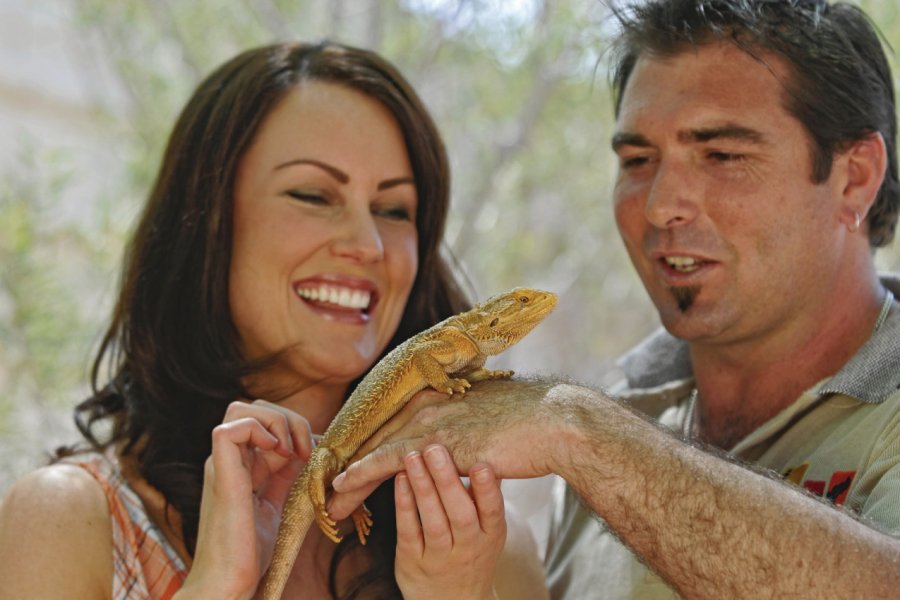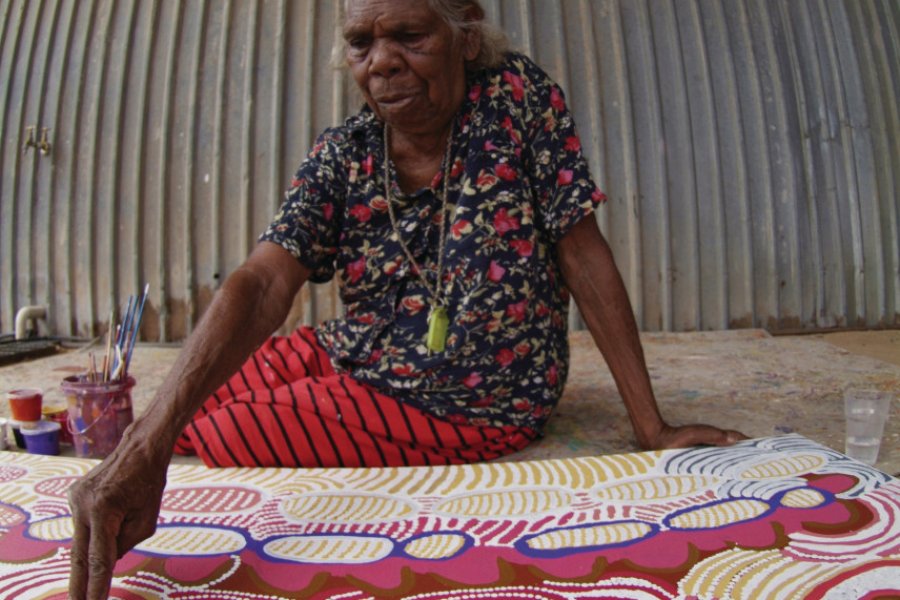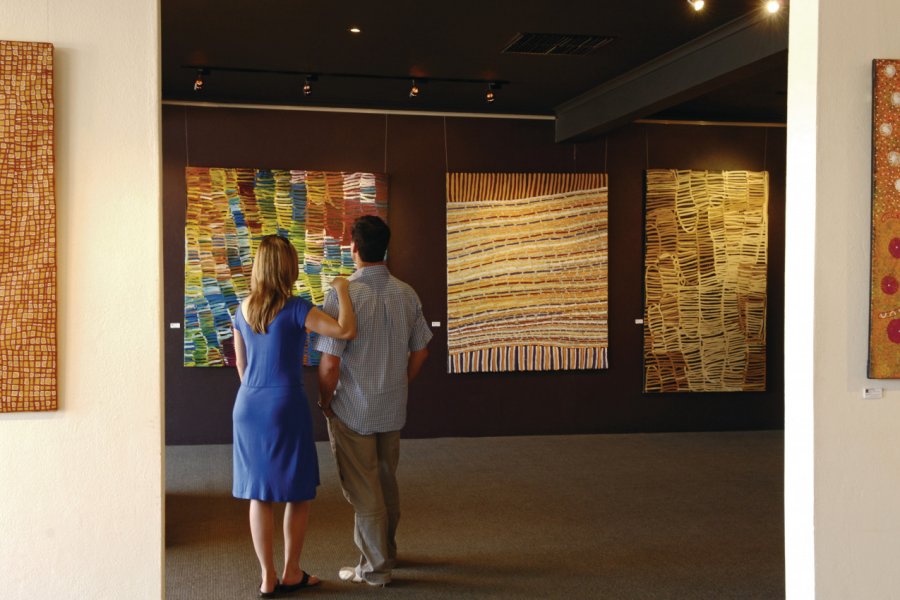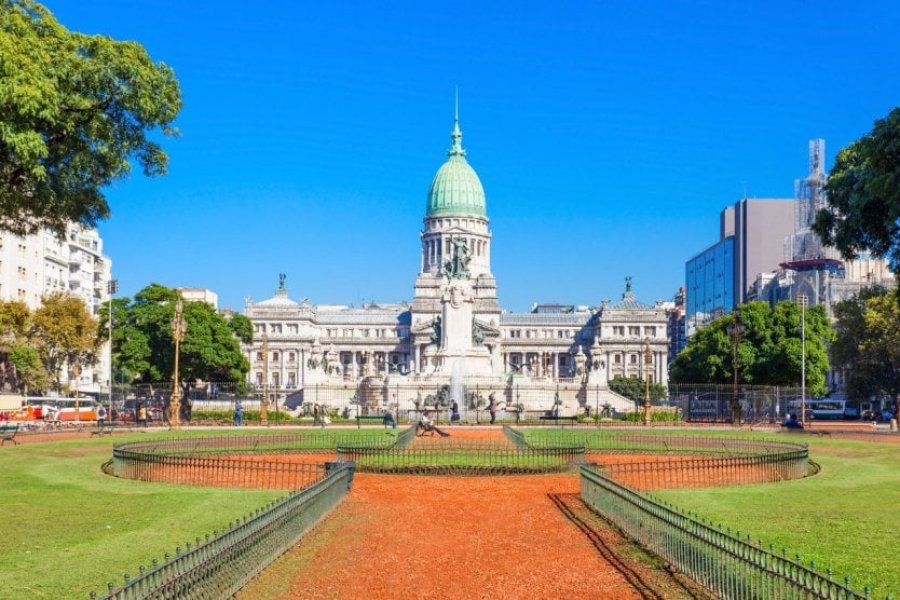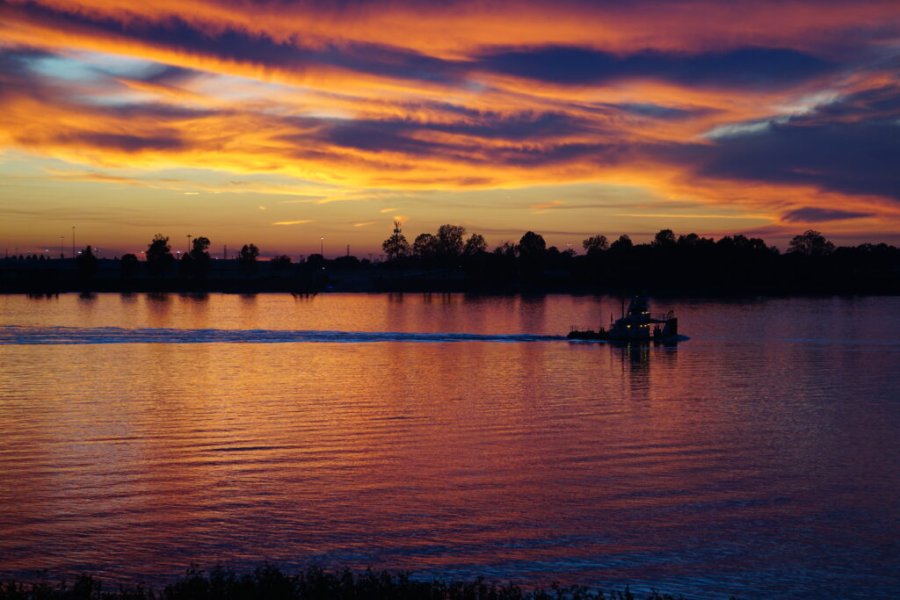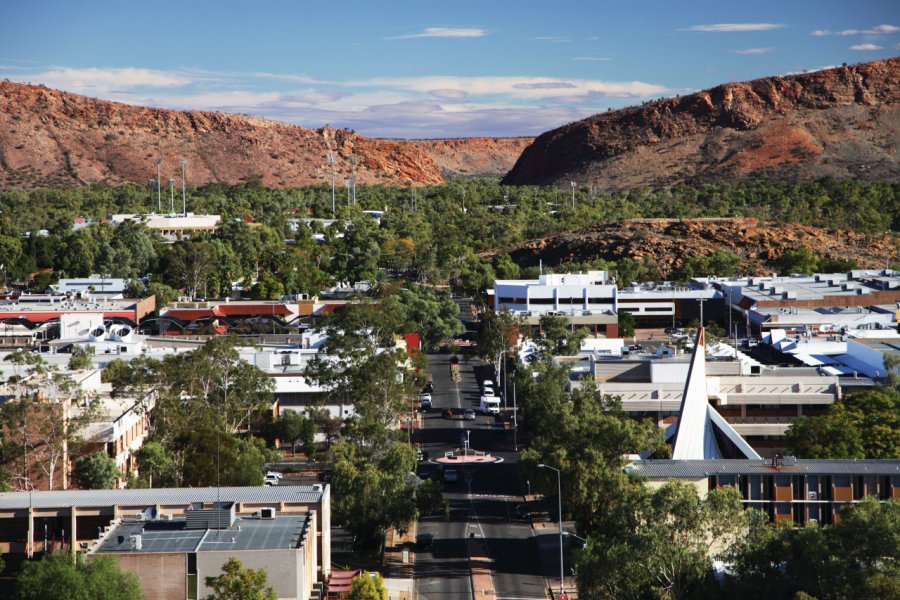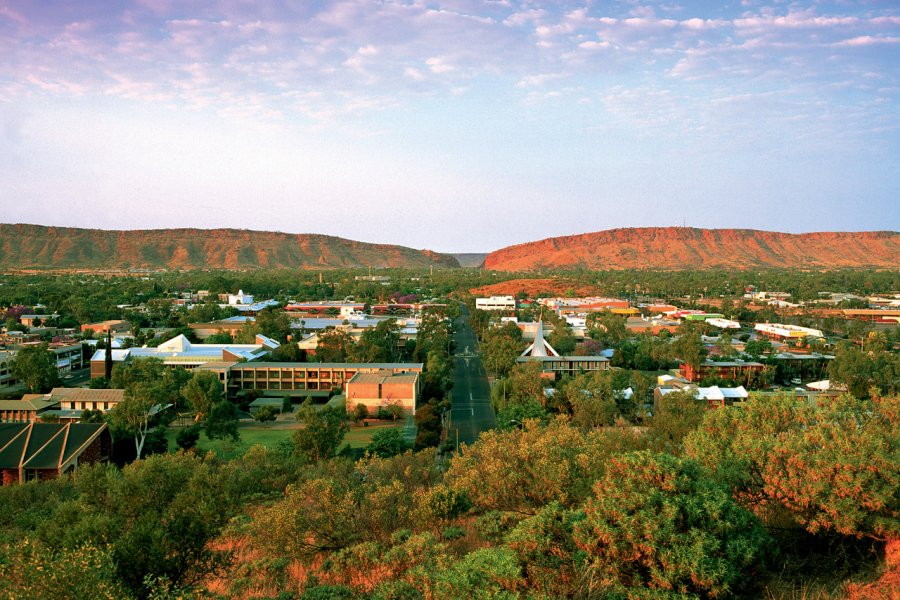Travel Guide Alice Springs
Find an accommodation
Advertising
Alice Springs and the surrounding area are the traditional lands of the Arrernte people. For them, Alice is in fact the meeting point of three creative forces, spiritual beings taking the form of caterpillars, which have given the landscape its present appearance. Climb to the top of Anzac Hill for the best view of the town surrounded by the West and East McDonnell Ranges, two of the creator caterpillars. Alice Springs and the Red Centre are first and foremost a vast and magical environment, with its changing colors. Many people come for two weeks and stay for ten years!A town of many facets, renowned for being the closest town to all the country's beaches, Alice now operates as the true capital of theoutback and serves a large part of the central part of the continent. The hospital, for example, is huge for a town of its size. Today, it's a major tourist hub for the Red Centre, with numerous accommodation facilities. Many pass through on their way to Uluru, which is 460 km away (5 hrs by road or 45 min by plane). The MacDonnell Ranges and Watarrka/Kings Canyon are also worth a visit. Alice is also home to the US-Australian satellite surveillance base Pine Gap. The skies here are ideal, which you can verify by going out of town at night to observe the stars. A great deal of secrecy surrounds this base, and it's quite common to meet Americans working there as "gardeners".But Alice Springs is first and foremost an Aboriginal town, and you'll certainly feel it. The local Aborigines are Arrernte, or Arrarnta, Aranda or even Arunta, these different spellings reflecting a colonial history marked by the presence of European missions: German Lutheran in the West (Hermannsburg) and Catholic in the East (Santa Teresa), but also the existence of several dialects. Some missionaries, notably Carl Stehlow (who left the Strehlow Centre in Araluen), were very involved in preserving the language, in stark contrast to other missions in the region which set out to suppress Aboriginal culture and language.Many of the aborigines you'll come across in the streets actually live in the myriad of small communities in the Red Centre, and often speak another language, such as Warlpiri (to the north-west), Pintupi (to the west, 9 of whom are known to have been the last aborigines to leave their traditional life in the desert to meet white men in 1984!), Anmatyerre (to the north), Alyawarra (to the north-east) or Pitjantjara (to the south). Although they are often unkempt in appearance, we mustn't be too quick to judge these desert populations, who are often poor but have an absolutely astonishing level of environmental, cultural and linguistic knowledge. Some visit Alice to consume alcohol, which is often forbidden in their communities. This leads to social problems and sometimes dramatic scenes in the town center. It is therefore not advisable to walk alone after dark.
What to visit Alice Springs?
Advertising
Suggested addresses Alice Springs
Weather at the moment
Advertising
Organize your trip with our partners Alice Springs
Transportation
Book your plane tickets
Car Rental
Boat rental
Accommodation & stays
Find a hotel
Holiday rental
Find your campsite
Tailor-made trip
Immersion travel
Services / On site
Activities & visits
Find a doctor





